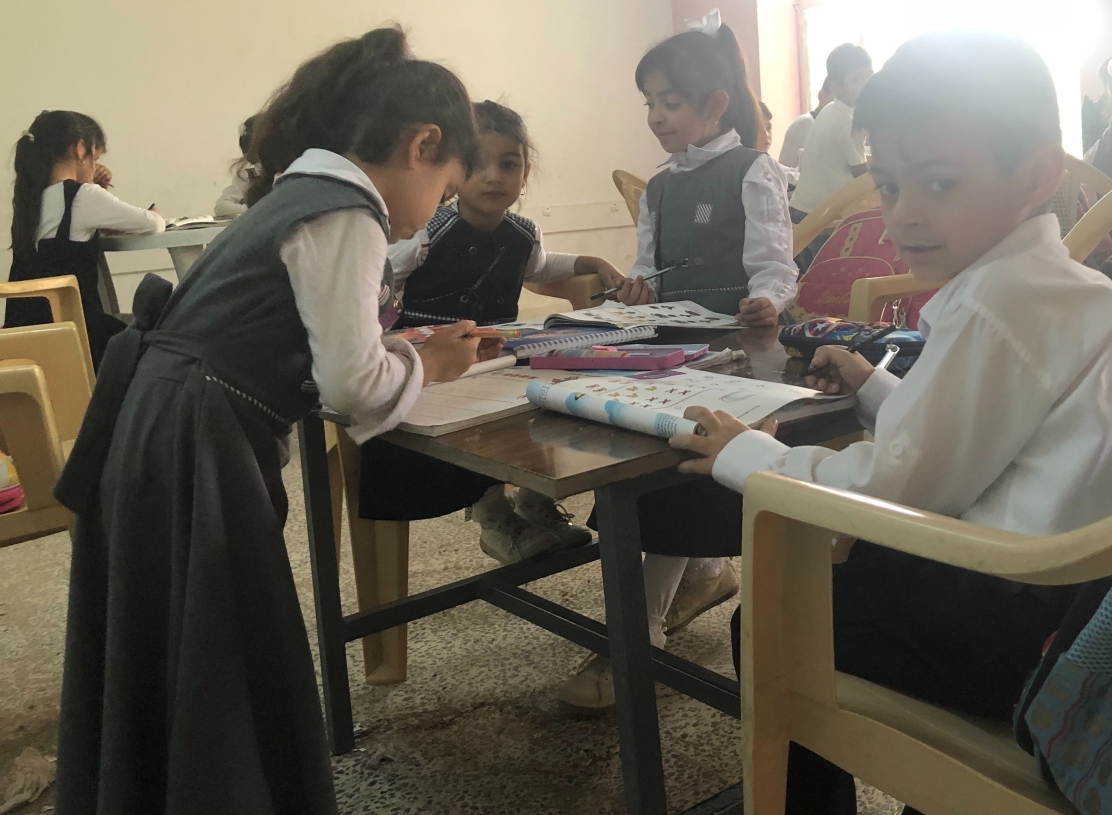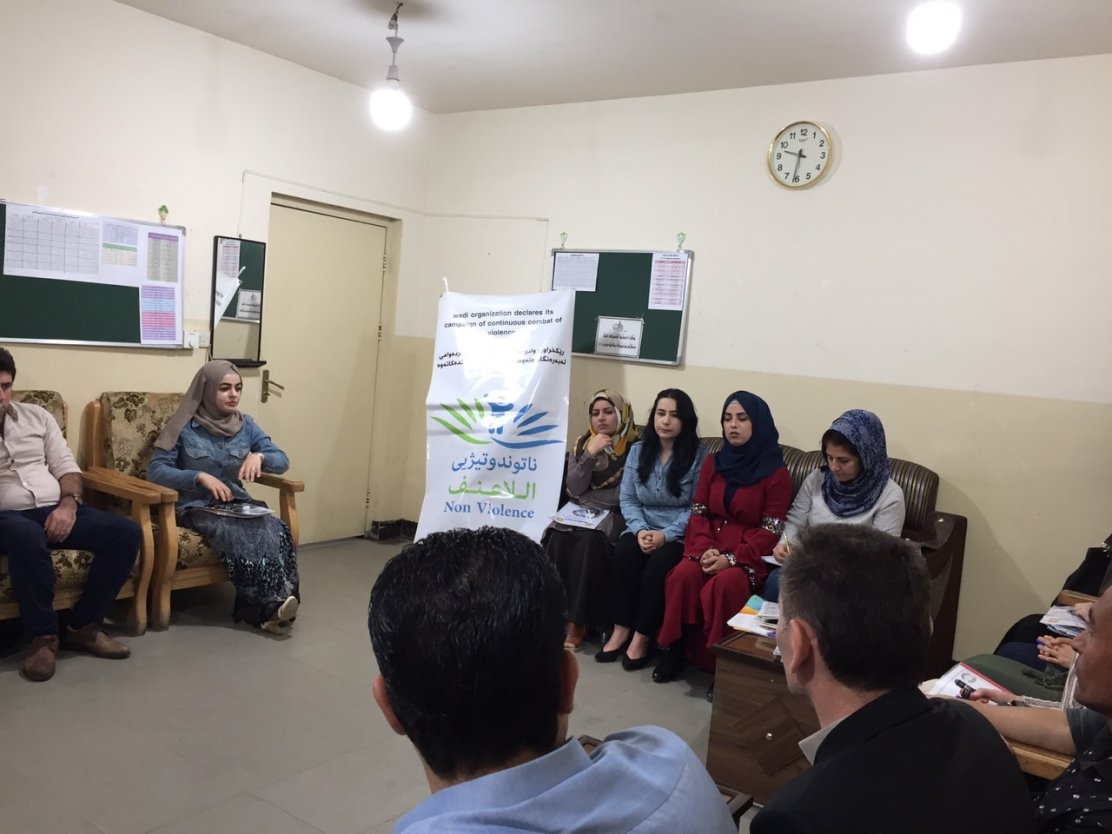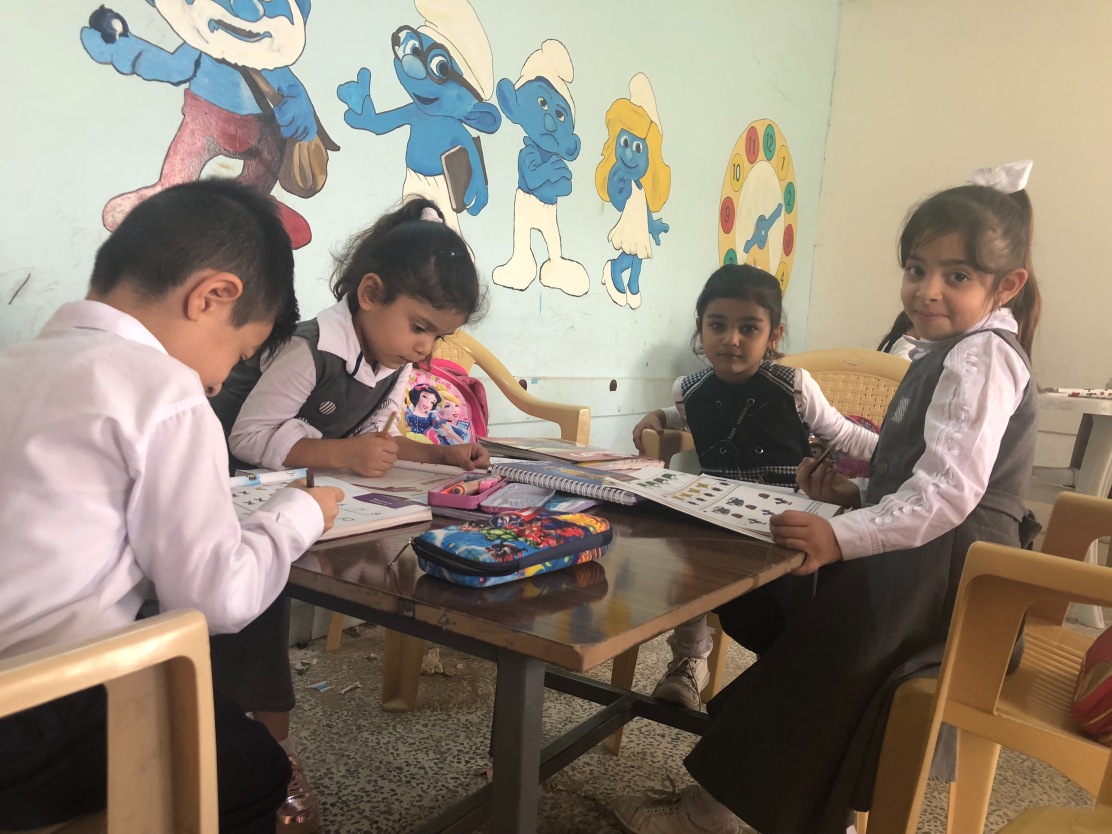In November, 2017, Wadi launched the ‘No to Violence’ campaign in Garmyan, targeting schools, teachers, parents and students. The focus of the campaign is to reduce and end violence in schools, improve communication skills among teachers and their students, along with teachers and parents. In addition, they also provide awareness seminars, legal and social counseling for women and men in villages.
The campaign started small, with the end goal of reaching nation-wide awareness and participation. With mobile teams working on field, the idea of making a real, effective and long-lasting changes and improvements was formed. You can follow the daily activities of the campaign the No to Violence Facebook Page.
The following interview takes a deeper look at our first ‘No to Violence’ school, Nawroz Primary School in Kifry-Garmyan (Grades 1-9). The headmaster; Hewa Muhmmad Ali, discusses the effects of the campaign on his teachers, students and community. This interview was conducted by Wadi staff member Shokh Mohammad. For more in our interview series please click here.

Head Master Hewa Muhammed Ali (left) and Wadi Staff member Shokh Mohammed (right) during this interview
In November 2017, you joined the campaign, it has a been a year now, what has changed since then?
This campaign has become part of our work and strategies, we use it in meetings and official events and meetings with Directorate of Education (DoE). We reconfirm that violence is not accepted, under any circumstances. We tell the DoE just like they praise good teachers, they must also follow up with those who are using violence.
We also talk about this with parents, not using violence with their kids. We held an event where we addressed parents and kids, regarding how they treat their kids and using violence. Many of the students told us that “ever since you talked about not using violence, my parents have changed.”
There used to be students who were forced to come to school, but we helped them, and now they have a really good connection with the school. We even have a better relationship with the families as we try to raise these children on the No to Violence concept.
What is the attitude of parents regarding ‘No to Violence’?
There are mixed attitudes. Some parents find it hard to accept. Some believe that hitting the child will result in him/her getting better grades. They are scared and threatened by children having freedom. However, there are many parents who support the process of non violence and make sure to go by it and support their children to lead a healthy school life.

School children working together – Fall 2018
In your opinion to what extent do children know about their rights?
Generally, it falls under two situations, those from 1st grade to 3rd grade know the least about their rights, from 4th grade onward it is better, they have a subject called civil studies. We also have weekly presentations in the school yard in front everyone we talk about their rights, and encourage them to ask for their rights. Hence, they are better informed. For the 1st graders we focus more on being introduced to school and attending classes. Our issue is that the families do not know much about their children’s rights.
Do you think Nawroz school was able to influence other schools to follow your example on banning violence from school?
Yes, definitely. For example: we recently had a new teacher transfer to our school. Shortly after he started working he told us “the sign outside is a problem for me, I can’t work by the No to Violence system.” So we told him that he cannot teach here.
As for direct influence, last year we invited two schools and three kindergartens to a workshop and worked with our teachers to stop violence in teaching. There were clear improvements, we see great results as we follow up with them.
Do you think the ‘Violence Free School’ sign outside the school has impacted the teachers?
We make sure that what is written on the sign “we teachers do not use violence” is respected. But yes indeed it is difficult on some of the teachers, because not everyone fully accepts the concept. But we work with them and change their environment as they work with different ages and learn different ways to deal with students without violence.
In many meetings with teachers and parents, they often ask what is the replacement of violence. What is your answer to that?
The violence that we saw and heard most was realted to children not doing homework and being disruptive in class. None of these issues should be resolved through violence. A replacement would be to inform the parents quickly that there is a problem. Communication with the parents is the key. Because violence can never force children to study or to sit still in class.
We even plan to meet parents of different grades separately, and brief them about their children, in case of particular incident or issue, we discuss all the details with the parents and plan a method to deal with the issue on hand.
There are so many different methods to deal with troublesome kids, but we absolutely reject any violent ways.
As a ‘Violence Free’ school, you were rewarded with a small library for children. What is your vision for this library? What effect do you think it will have?
I can say that we have two ‘reading times’ in school, one is during the school day; there are some subjects like civil studies that we can take advantages of its time and use it for reading, especially the third and fourth grade that have more time to read.
As for next summer we have a number of teachers who volunteered to keep the library open. The plan is for it to be open four days a week, to be supervised by three teachers and the social worker.
Speaking of the social worker, how’s the relationship and communication between the social worker and the students and teachers?
Their relationship is good. He [the social worker] has good communication with the teachers, and same with the students. He records the smallest of incidents. For example, he meets students who are not doing well and follows up with them as they work on improving. This assures the teachers that he deals with the students and the students also know, their teachers are aware of their progress situation and all this happens without violence. Now he created a system, which works on positive reinforcement for the troublesome students.

Meeting with Teachers as part of the ‘No to Violence’ Campaign — Working together to stop using violence in schools
What do you think can be done to follow-up with teachers who still use violence? What are your suggestions to Department of Education?
First its important for the social workers, to rotate and work in other schools, to learn from experience of other social workers in other schools. Then to have regular meetings with school representatives, they also need to talk and point out those teachers who are in need of psychological therapy or psychosocial assistant. We need to stop the shame of addressing this. The teachers who are not doing well, must be addressed just like the good teachers.
The regulations for teachers must be updated to include banning: shouting, pulling hair or ears…etc. these needs to be addressed and detailed and I think it would be a clear guideline for teachers.
What do you say to those parents and/or teachers who personally use violence?
To those who are living with violence in their beliefs; I tell them to never choose violence as a method for improvement and change. To educate themselves on how to deal with children, how to sit and talk to them, from their own children to their students.
Because we know what is the effect of violence on children, and what kind of cycle it would create, and that in the future your own children and grandchildren will suffer from that too.
You have to view the students as your own children, because the best education is given with kindness.
So what is next for Nawroz primary school?
We are working on two important strategies, first is the grouping system for the first-grade students, which is applied by KRI and the British counsel. We feel like it gives students much more freedom.
Additionally, we want to connect to the students on a deeper level with creating paintings of freedom of speech together with the message that “ I am a human being even when I am a child”
A second strategy is that we continue with our seminars and meetings with parents and other schools to spread the word. We want to take advantage of our network and encourage parents to follow-up with teachers so that also teachers feel responsible and know that parents are following up to their children.
To make it clearer, our main goal is to “engage parents in the process of watching over teachers so that they don’t result to violence”.

Children working together — Fall 2018
